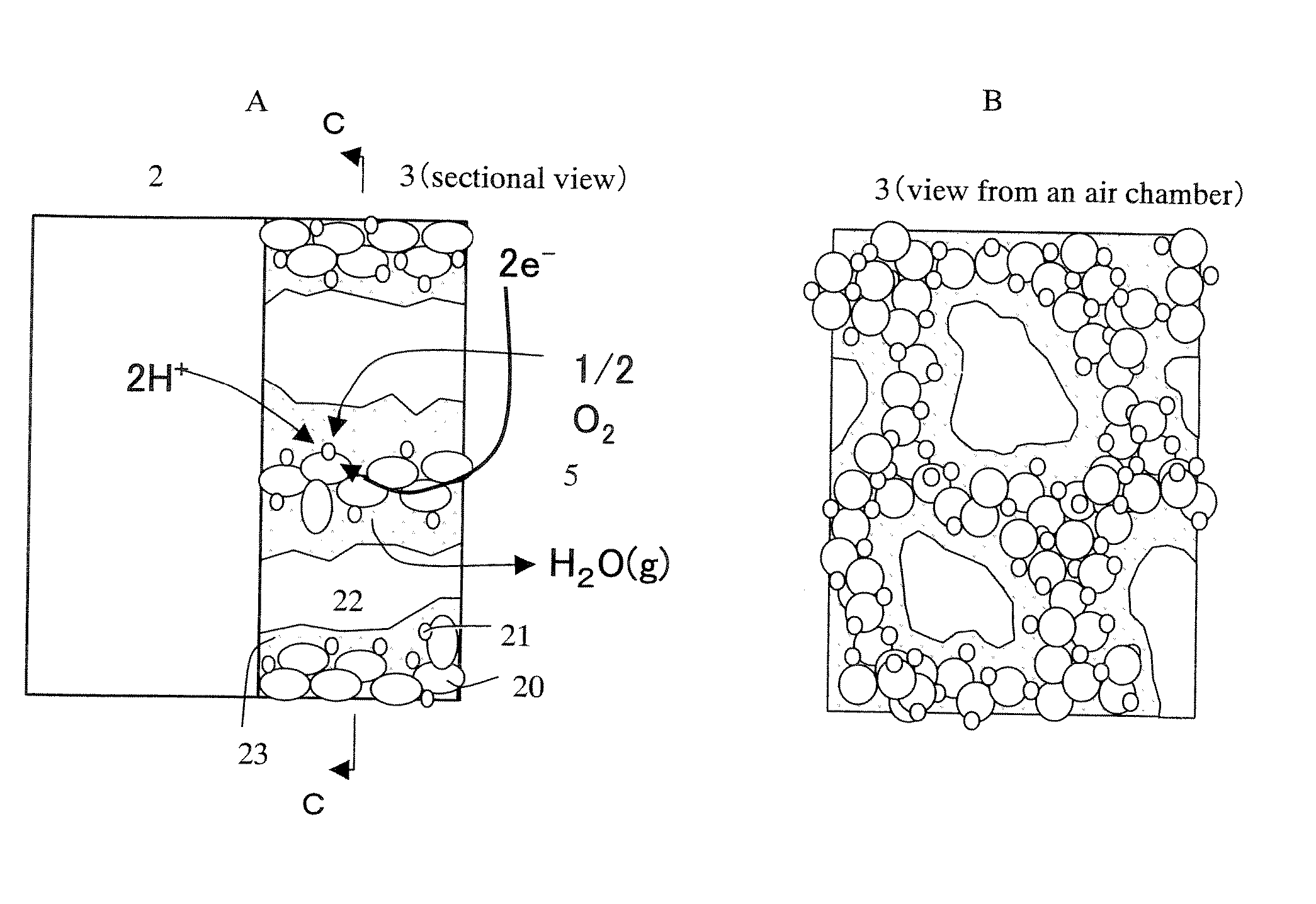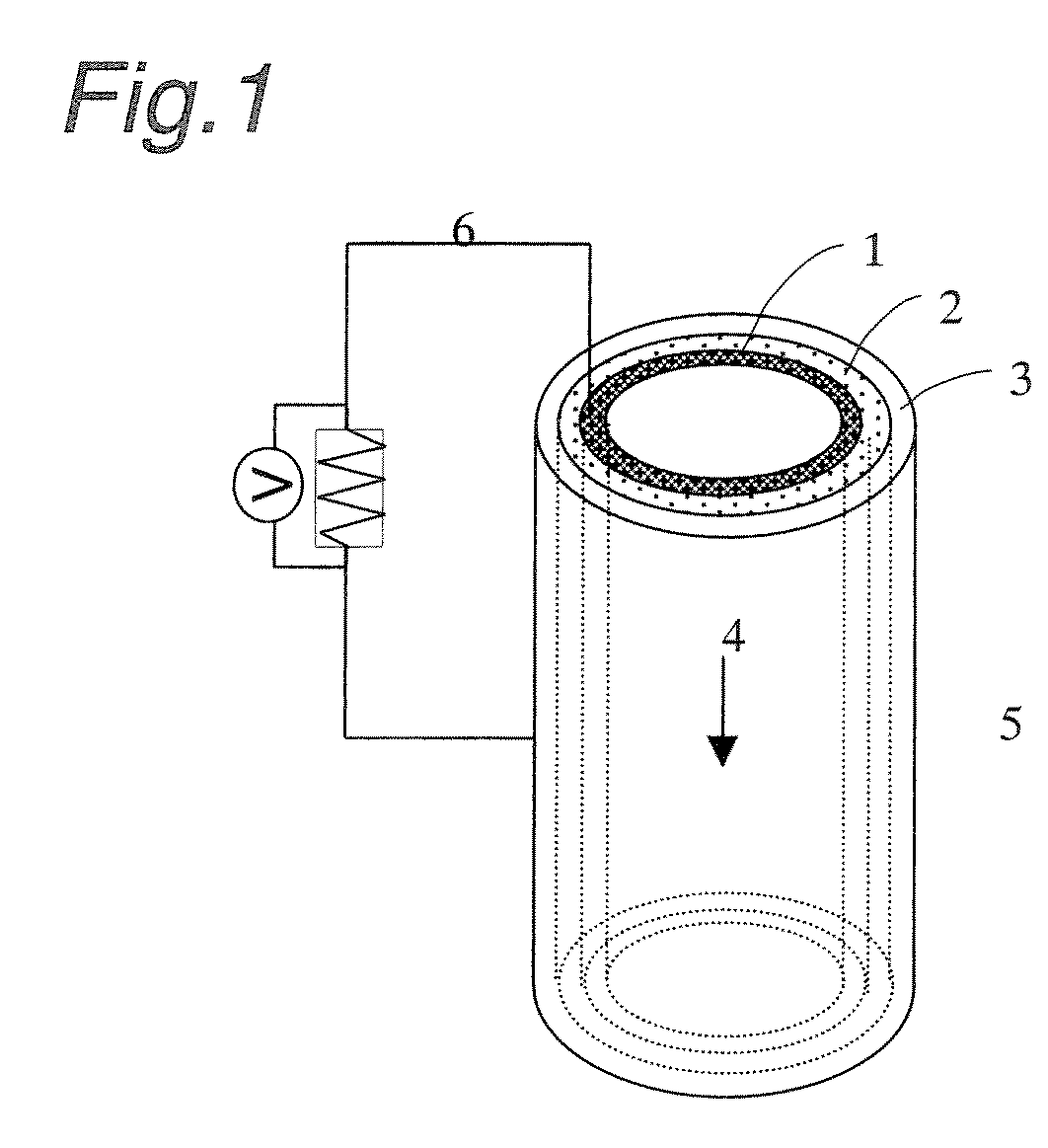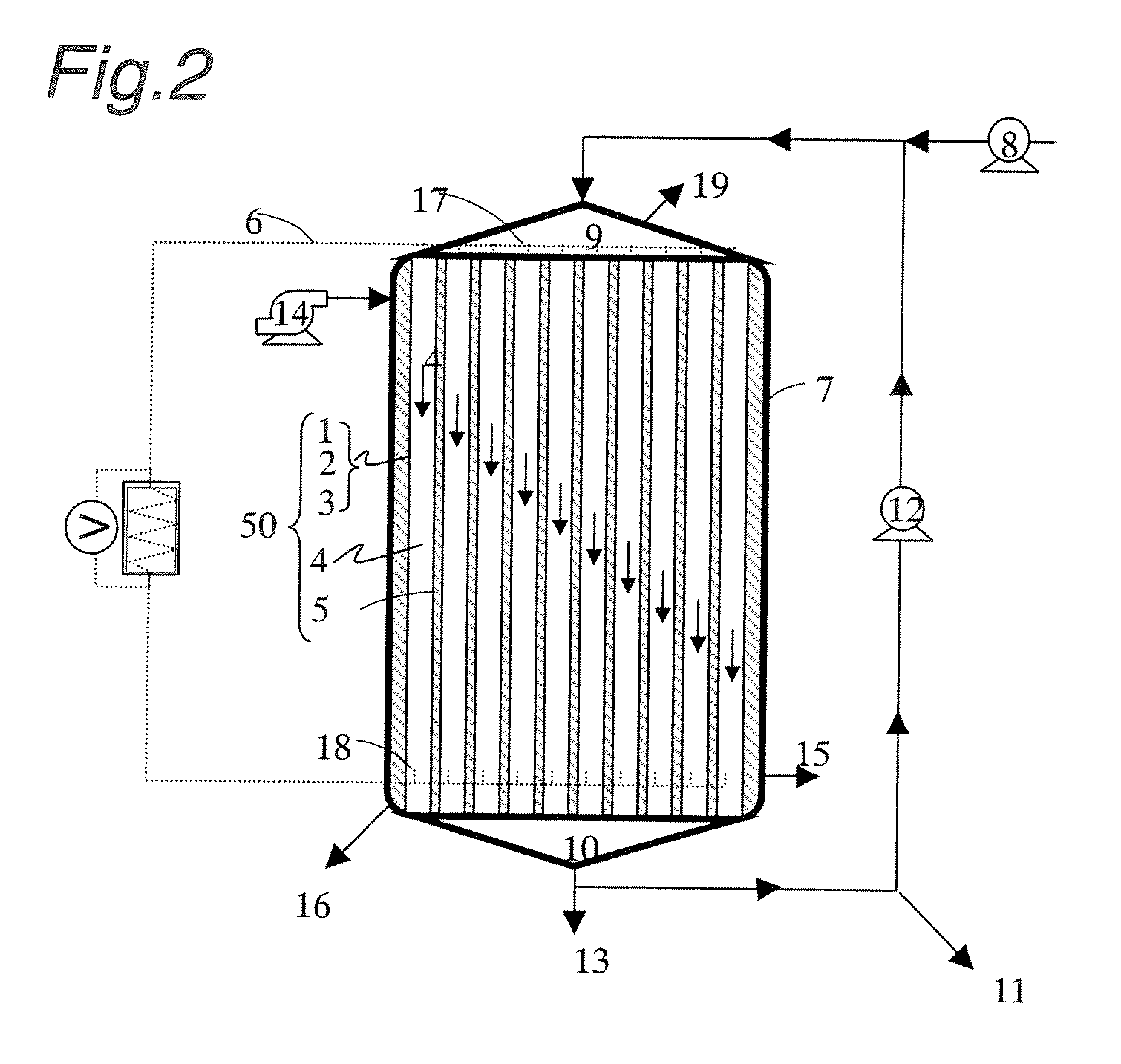Method and apparatus of generating electric power
a technology of electric power generation and electric power, applied in the direction of electrical apparatus, solid electrolyte fuel cells, fuel cells, etc., can solve the problems of poor energy efficiency and complication of the apparatus used, the electron mediator embedded inside the resin layer cannot be efficiently brought into contact with the enzyme of microorganisms or an extracellularly released electron medium, and the current density per electrode surface cannot be increased. , to achieve the effect of effectively taking out electrical energy and smoothing the electrochemical reaction
- Summary
- Abstract
- Description
- Claims
- Application Information
AI Technical Summary
Benefits of technology
Problems solved by technology
Method used
Image
Examples
example 1
[0079] Power generation performance was compared when the generating electric power apparatus for an experiment shown in FIG. 5 was used and an electron mediator (AQ-2,6-DS) was immobilized on to an electrode (porous graphite) by a sulfonamide bonding (Example 1) and the electron mediator was merely added to the liquid phase (Control).
[0080] The generating electric power apparatus had a structure obtained by using a structure of laminating two sheets of cell frames (25, 26) having a side length of 100 mm and a thickness of 10 mm and two sheets of separators (24a, 24b) having the same size as a basic unit and laminating a plurality of the basic units. Specifically, a separator 24 was arranged adjacent to a cell frame 25, and a porous graphite on to which AQ-2,6-DS had been immobilized by a sulfonamide bonding at a density of 20 μmol / cm2 was arranged as an anode 1. Then, an electrolyte membrane 2 made of a cation-exchange membrane (Nafion, DuPont) was arranged in contact with the ano...
example 2
[0086] The power generation performance was compared when the generating electric power apparatus for experiment shown in FIG. 5 was used and the electron mediator (AQ-2,6-DS) was immobilized on to an electrode (porous graphite) by a sulfonamide bonding (Example 2) and Neutral Red was immobilized on to an electrode (Control).
[0087] The experimental conditions other than the constitution of the power generation unit and the electrode were the same as in Example 1. The method of immobilizing Neutral Red followed the method described in Park et al., 2000, Biotechnology Letters 22: 1301-1304. Specifically, graphite was connected to the other electrode through a power source apparatus, dipped in a 20% sulfuric acid solution and subjected to electrolytic oxidation using the graphite as an anode at a current density of the electrode of 40 mA / cm2 for one hour. The carboxyl group-introduced graphite plate thus obtained was dipped in a carbodiimide solution having a concentration of 2 g / L an...
example 3
[0089] The power generation performance was compared when the generating electric power apparatus for experiment shown in FIG. 5 was used and the electron mediator (AQ-2,6-DS) was immobilized on to an electrode (porous graphite) by a sulfonamide bonding (Example 3) and AQ-2,6-DS was mixed with a photo-cross-linkable resin and a graphite powder, and the resulting mixture was coated on the electrode (porous graphite) and thereafter cured and immobilized by irradiation with ultraviolet rays from a mercury lamp on to the electrode (Control). In both cases the amount of AQ-2,6-DS immobilized was set at an electrode density of 20 μmol / L.
[0090] The experimental conditions other than the constitution of the power generation unit and the electrode were the same as in Example 1. The method of immobilizing with a photo-cross-linkable resin followed the method described in Japanese Patent Public Disclosure (KOKAI) No. S57-69667. Specifically, 3 g of epoxy acrylate, 0.92 g of AQ-2,6-DS chloride...
PUM
 Login to View More
Login to View More Abstract
Description
Claims
Application Information
 Login to View More
Login to View More - R&D
- Intellectual Property
- Life Sciences
- Materials
- Tech Scout
- Unparalleled Data Quality
- Higher Quality Content
- 60% Fewer Hallucinations
Browse by: Latest US Patents, China's latest patents, Technical Efficacy Thesaurus, Application Domain, Technology Topic, Popular Technical Reports.
© 2025 PatSnap. All rights reserved.Legal|Privacy policy|Modern Slavery Act Transparency Statement|Sitemap|About US| Contact US: help@patsnap.com



